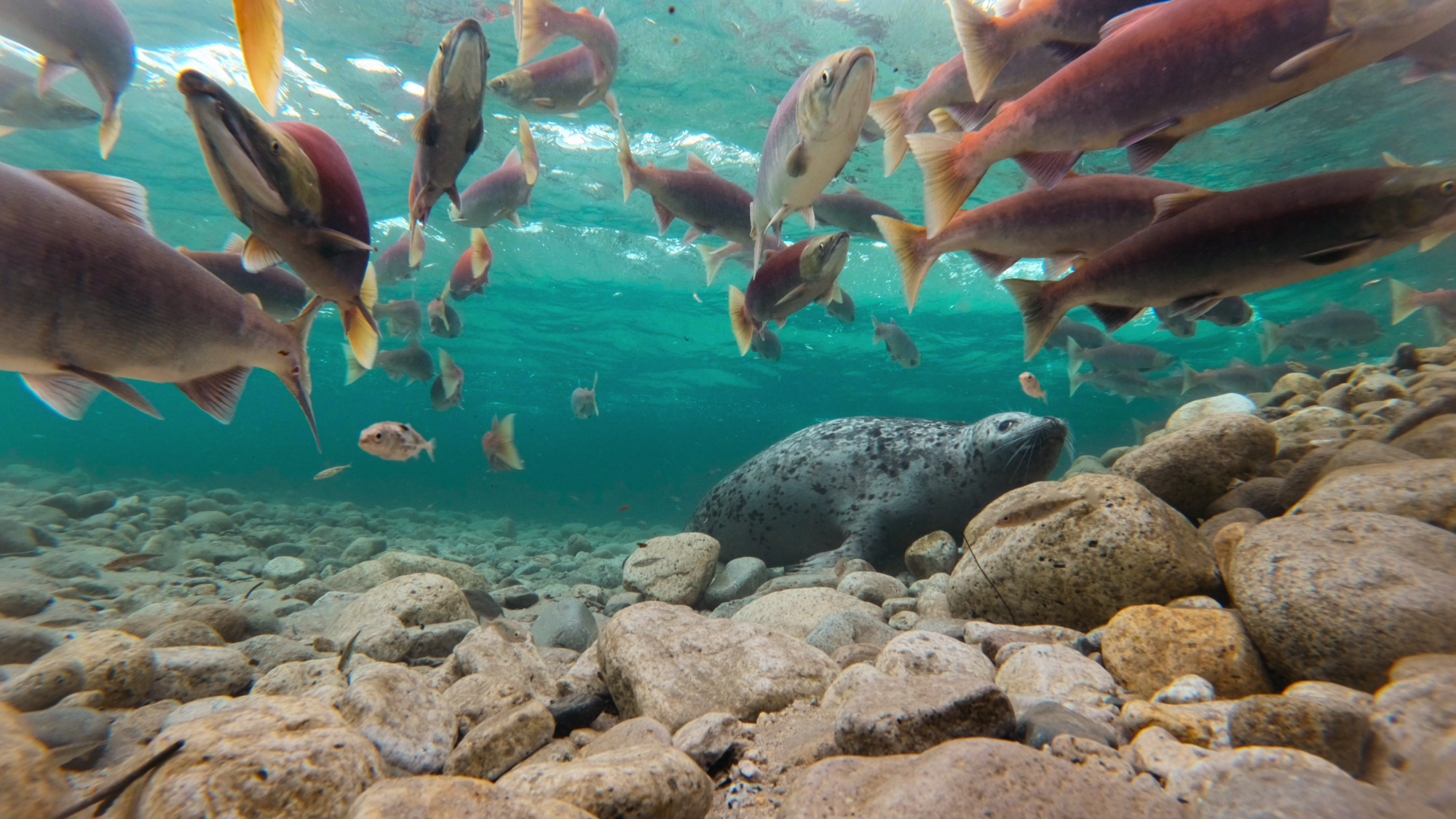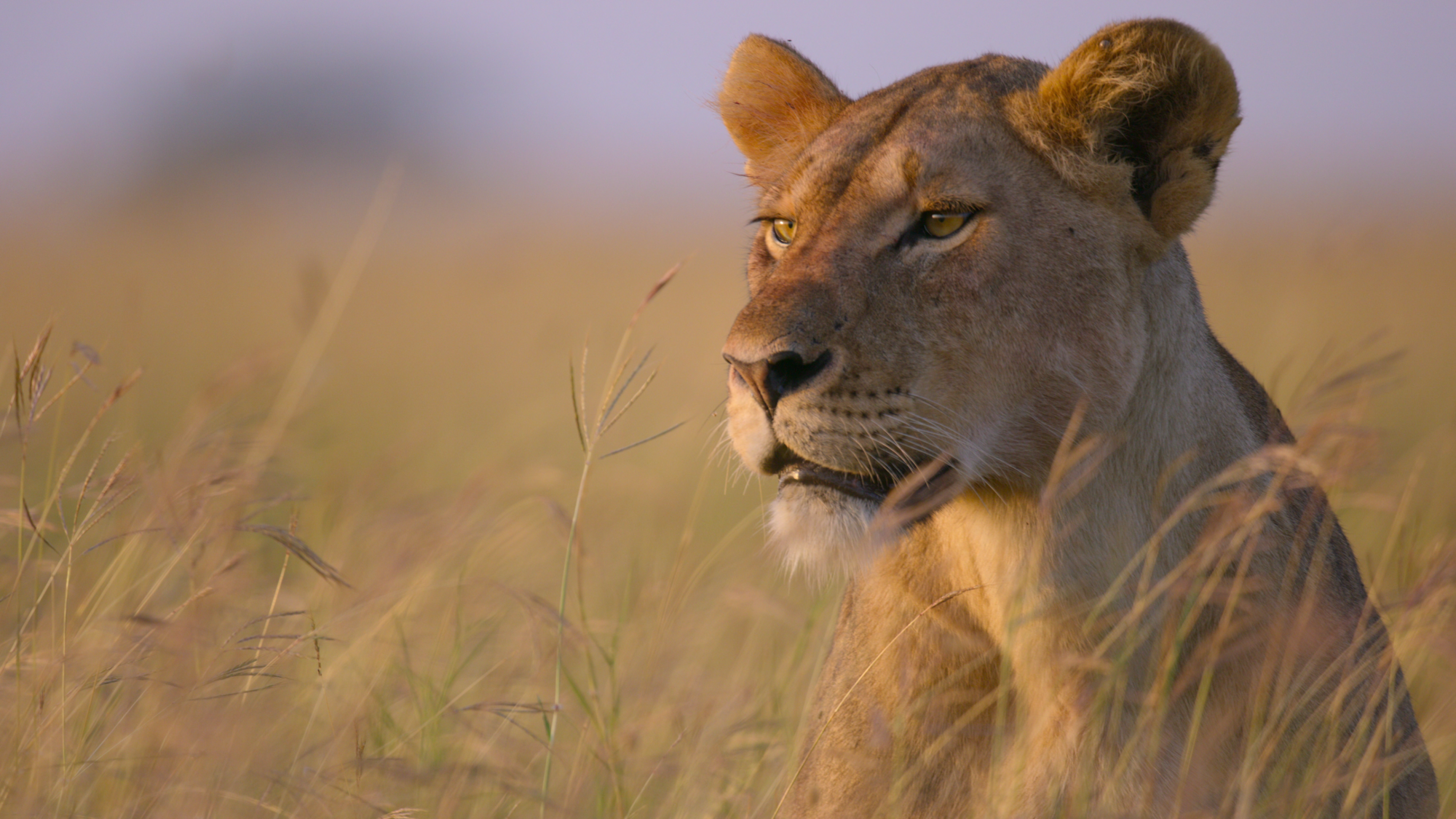— Episode synopsis —
It’s summer, and our solar-powered planet is bustling with animals on the move. Snow geese are breeding in the warming Arctic tundra, and tadpoles in Vancouver are trying to grow into toads; whale sharks are gathering to feed in the Persian Gulf, and in Europe, the honeybees are hard at work building new hives. In Alaska, thousands of sockeye salmon have flushed bright red to make their journey upstream to spawn, an annual event that freshwater seals and grizzly bears depend on to fatten up for winter. With virtually no sea ice remaining in the Arctic, polar bears now spend most of their days swimming, and a young cub who struggles to keep up with his mother may be left behind. But the most treacherous journey of all can be found on the plains of the Serengeti, where wildebeest and zebras must cross the “River of Death” to find fresh lands on which to graze. Many of them will drown in the stampede to make it through the water – if lions and giant crocodiles don’t eat them first.
Lions and Wildebeest in the Serengeti
A pride of lions must wait throughout the long dry season for prey to enter their territory, and when the migratory herds of wildebeest arrive, it’s a thrilling, violent opportunity. But the crew’s biggest dangers came not from hungry lions or stampeding herds; instead, they found themselves narrowly avoiding deadly snake bites from the poisonous adders and cobras nestled within their camp.
Salmon Run from Alaska’s Bristol Bay to Lake Iliamna
This is the largest salmon run in the world, an estimated 30 million strong sockeye salmon navigating up one of the last pristine waterways in America to spawn. The team was also able to film the only population of freshwater seals in the country as they performed a rarely-seen ambush, and to witness a bear enjoying his salmon lunch from a vantage point so close they could hear the crunching.

Polar Bears in the Arctic
Filming this sequence was one of the most challenging and emotional of the entire shoot. After four weeks of filming, the crew only spotted a total of nine bears, many of which were too wary of the cameras. When the crew found a mother bear and her two cubs – one of whom was struggling badly – they were able to follow the family for 90 minutes and realised that the weakest cub was at risk of abandonment. The possibility brought the crew on the filming boat to tears.
Wildebeest and Zebra Crossing the Mara River in the Serengeti
The crew endured torrential downpours and were themselves nearly swept away in the “River of Death” while capturing a zebra foal’s crossing amidst giant crocodiles waiting for a meal.

